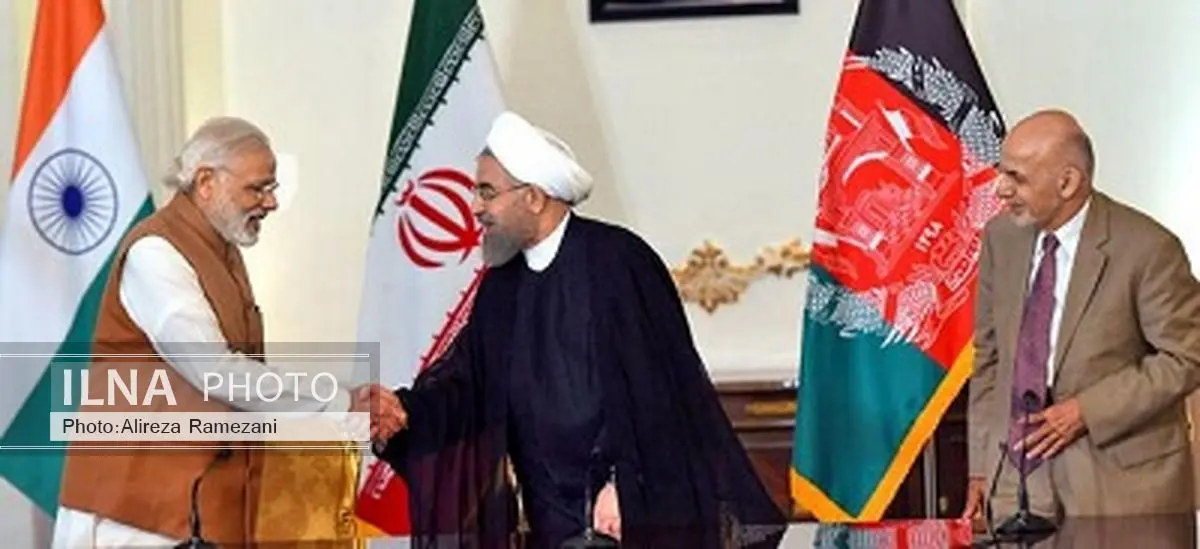To sidestep Pakistan, India embraces an Iranian port

Indian Prime Minister Narendra Modi was in Tehran on Sunday and Monday to ink a major trade deal between India, Afghanistan, and Iran, which is in the process of unshackling its economy from years of sanctions imposed by the West. He used his public addresses there to evoke the "past glory" of India and Iran's shared history, which dates back millennia, and even quoted Ghalib, an Indian poet who wrote often in Persian; Washington Post reported.
But behind the flowery language is a keen strategic move aimed at reasserting the potential for economic partnership with India at a time when China has expanded its economic influence across Central Asia. And since India is separated from the "Stans" and beyond by Pakistan, its immutable and hostile western neighbor, the agreement naturally centered on an alternate route: Chabahar, a port which India has been eyeing for many years along Iran's southern coast.
“The distance between Kandla and the Chabahar port is less than the distance between New Delhi and Mumbai, and so what this agreement does is to enable us quick movement of goods first to Iran and then onwards to Afghanistan and Russia through a new rail and road link,” said Nitin Gadkari, an Indian minister who oversees infrastructure development and who accompanied Modi to Tehran. He was referring to a port on India's west coast, and also the North-South Transport Corridor, a network of roads and railways, some built with Indian assistance, which would move goods north from Chabahar.
But even closer to Chabahar is Gwadar, in Pakistan, the focal point of a $46 billion investment China has made in an "economic corridor" through Pakistan that will bring oil from the Middle East to China more quickly and cheaply. While there are certainly other economic imperatives at play at both ports, oil figures heavily in the calculus of their existence. China is reportedly Iran's biggest buyer for oil. India is number two.
India is investing far less in Iran than China has in Pakistan, but Modi positioned the deal as one based on shared values of moderation and tolerance — as opposed to those of their unnamed adversaries.
“Lifting of the international sanctions against Iran has opened up immense opportunities for both the countries, especially in the economic sphere,” added Modi, in a speech. "Afghanistan will get an assured, effective, and a friendlier route to trade with the rest of the world."
While his statements seemed to carry an undercurrent of antagonism, the deal is as plainly economic as much as it is strategic. India is mostly just trying to grab a piece of Iran's post-sanctions economic growth. India will extend a $150 million credit line to Iran to build the port, and a special economic zone will be established there, in which India will set up numerous factories that can run on Iranian fuel at discounted rates.
"India wants to make sure that China doesn’t start to define these countries' choices by being the only option they have," said Tanvi Madan, an expert on Indian foreign policy at the Brookings Institution.
In any case, these problems are overshadowed by the needs on both ends: Iran must find markets for oil and gas as it emerges from international sanctions, and India needs oil to keep its economy humming — and to keep the expanding middle class, which largely supports Modi's party, comfortable.
Both nations sought an economic partnership long before the lifting of Western sanctions on Iran. In those years, Iran was India's second-biggest supplier of crude oil. While the sanctions were in place, India was free to buy Iranian oil under U.S. State Department waivers for several Asian countries that could not easily break with Iranian supplies, including China and South Korea, but the difficulty of financial transactions with Iran made their oil less enticing. Trade sank to the point that India imported only 6 percent of its oil from Iran in the 2014-2015 financial year, down from a high of 17 percent.
U.S. officials tried hard to encourage India to seek alternative sources, such as Saudi Arabia, but Iran has been equally persistent in courting India, promising aid in oil exploration in Indian territory and favorable terms for trade in Iran’s big consumer market. And now that many of the sanctions have been lifted, the oil trade between the two countries is back on the up and up. As of April, according to Reuters, India would be importing at an annualized rate that would be its highest since before the sanctions were in place.
Part of the sweetness of the deal for the Iranians is that, like many countries it had been selling oil to while still under financial sanctions, the Indians hadn't figured out a way to pay for the oil without incurring huge losses or jeopardizing their agreements with the United States and other countries imposing sanctions on Iran. As part of the deal Modi made in Tehran, Indian refiners finally cleared a huge chunk of the $6.4 billion they owe to Iran, and pledged to quickly transfer the rest.
END
